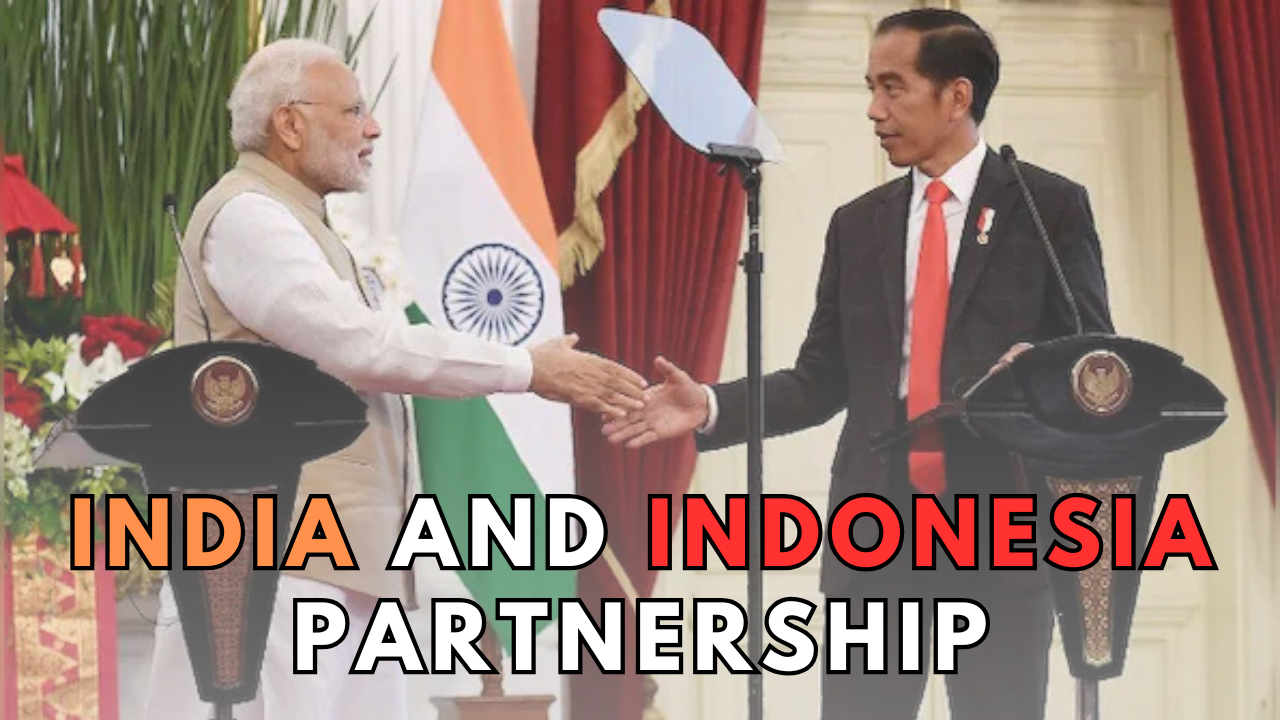Font size:
Print
India-Indonesia Relations: A Pillar of Stability and Prosperity in the Indo-Pacific
Context:
Indonesian President Prabowo Subianto was the chief guest at India’s 76th Republic Day celebrations on January 26, 2025. His presence underscored the strategic importance of India-Indonesia relations in the Indo-Pacific region.
Historical Precedents
- Indonesia’s first President, Sukarno, was the chief guest at India’s first Republic Day in 1950.
- This year marked the fourth time that an Indonesian President graced India’s Republic Day celebrations.
Evolution of Ties: From Historical Bond to Strategic Partnership
- Early Relations and Cultural Links
-
- India and Indonesia share ancient cultural and civilizational ties, with strong influences from Hindu-Buddhist traditions.
- The freedom struggles of both nations had parallel trajectories, with leaders like Sukarno and Nehru fostering a close friendship.
- Indian Community:
- PIOs: Mostly South Indians; ~10,000 Sindhis & Sikhs; well-assimilated but culturally connected.
- NRIs: ~14,000 professionals in Jakarta, Surabaya, Bandung.
- Political and Economic Strengthening
- Over the years, India and Indonesia have expanded cooperation across multiple domains, including politics, trade, and defense.
- In 2018, the Comprehensive Strategic Partnership (CSP) was signed, strengthening their commitment to regional security and economic collaboration.
Defence Cooperation
- Key Agreements: Defence Cooperation Agreement (2018) for strategic information exchange.
- Joint Activities: Biennial Defence Ministers’ Dialogue, Navy & Air Force Staff Talks, Garuda Shakti Army Exercise, naval exercises (IND-INDO CORPAT, Samudra Shakti, KOMODO, MILAN).
- High-Level Visits: Defence Ministerial Meetings (2018, 2020, 2024), CNS visit (2024).
- Defence Industry Cooperation: First India-Indonesia Defence Industry Exhibition (April 2024).
Space Cooperation
- ISRO-LAPAN MoU (1997) led to Biak TTC Station (1999, expanded 2005-06).
- Recent Developments: ISRO-BRIN agreements (March 2024) for transfer and operation of Biak TTC facilities.
Key Areas of Cooperation: Trade (Geo Economic) , Security (Geo Strategic) , and Geopolitics
- A) Trade and Economic Ties: Unlocking Mutual Growth
- Current Trade Scenario
-
- Bilateral trade stands at approximately $30 billion, with significant scope for expansion.
- India’s exports to Indonesia include refined petroleum, automotive parts, and pharmaceuticals.
- Indonesia’s exports to India include palm oil, coal, and minerals like nickel and copper.
- Priority Sectors for Investment and Collaboration
-
-
- Ennology: Strengthening digital infrastructure and cybersecurity cooperation.
-
- Investment Trends and Future Potential
-
- Indonesian investment in India stands at $653.8 million, while India has invested $1.56 billion in Indonesia.
- Both countries aim to quadruple their trade volume over the next decade by easing tariff and non-tariff barriers.
B) Security Cooperation: Strengthening Maritime and Defense Ties
- Maritime Security and Naval Collaboration
-
- Both nations share strategic interests in the Indo-Pacific, ensuring freedom of navigation and maritime security.
- Conducting joint naval exercises and increased defense cooperation under the Comprehensive Strategic Partnership (CSP).
- Counterterrorism and Cybersecurity
-
- Enhanced intelligence-sharing mechanisms to combat transnational terrorism threats.
- Cybersecurity partnerships to counter growing cyber threats and digital espionage.
- Strengthening cooperation in defense technology and military training.
- C) Geopolitical Alignment: Navigating Global Power Shifts
- India-Indonesia in Regional and Global Context
-
- Both countries emphasise ASEAN centrality and a free and open Indo-Pacific.
- Alignment with India’s Act East Policy and Indonesia’s Global Maritime Fulcrum doctrine.
- Indonesia’s inclusion in BRICS (2024) alongside India marks a new phase in global economic rebalancing.
- Managing Relations with Major Powers
-
- China: Balancing economic ties while addressing territorial concerns in the South China Sea.
- United States: Engaging with the U.S. on trade, defense, and counterterrorism cooperation.
- Trade Barriers and Protectionism: Addressing the implications of U.S. tariffs on Indonesian exports like nickel, tin, and copper.
Conclusion
India and Indonesia are poised to become economic and security anchors in the Indo-Pacific. Strengthening trade, investment, and security ties between the two nations will bolster regional stability and contribute to global prosperity. Their strategic alignment can serve as a model for South-South cooperation and regional integration.



